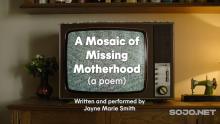Opinion
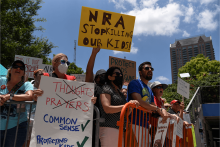
“I hate, I despise your vigils,
and I take no delight in your school shooter drills.
Even though you offer me your thoughts and prayers,
I will not accept them;
and the offerings of well-being of your collection plates
I will not look upon.”

It has been hard to read any of what has been written about the mass shooting in Uvalde, Texas. At some point, you start to wonder if we have convinced ourselves that words speak louder than actions.
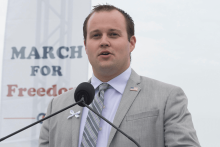
For many of the people who watched the show and enjoyed the Duggar’s supposedly wholesome, winsome lifestyle, the recent conviction and sentencing of the eldest child, Josh Duggar, to 12 years in prison on multiple counts of possesion of child pornography may be shocking. How could a family with such strong “Christian values,” who kept their children far away from the evils of “The World,” have created this?
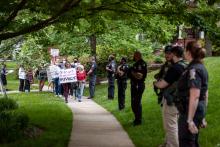
Christians are often unhelpfully wary of aggressive protest tactics. They promote a particular understanding of “unity” or “love” prioritizing “civility” over difficult conversations that lead to justice. Some Christians are even uncomfortable being present during debates or protests where activists utilize more aggressive tactics. But Jesus’ Sermon on the Mount and Paul’s letters to the church help Christians analyze power and privilege so that they can engage in healthy disruption and confrontation.

Men uses imagery from Genesis 3 to reflect on the culturally assigned guilt of women and the patriarchal system that has perpetuated this guilt through a centuries-long history of interpretation.
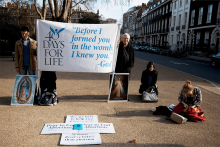
I told my congregation that nine years earlier, on a cold January morning, I walked into a Planned Parenthood clinic.
Before you read further, let’s pause: What story do you think I’m about to tell? What assumptions about me or my circumstances did you make? Do you see me as someone with less moral authority than when you started reading? Take a moment to think.

Before the public outcry dies down — and isn’t sad that we all know it will? — we must boldly and unequivocally denounce the great replacement theory and instead live out the great commandment. The great replacement theory draws on the worst of our nation’s history, falsely implying that nonwhite people are threats to our nation’s future. But the great commandment offers the best of our civic and religious values, reminding us that we are to love our neighbors as ourselves; it lends itself to a moral vision of multi-racial democracy in which everyone, regardless of race, ethnicity, and religion, is equally valued.

All the glory Kendrick Lamar has received for his three Grammy Album of the Year nominated works of Christ-influenced, socially conscious rap masks a difficult truth: To be a fan of his music, you have to disregard its desecration of women.

We are grateful to work with so many gifted writers, reporters, and illustrators, and we want to take this opportunity to toot our collective horn. Take a moment to read some of our award-winning stories from 2021.

Two films in theaters right now ask if we can find some way to escape the madness of our reality and find something better. Sounds pretty nice, doesn't it?

Deeply flawed and alarming. That was my reaction last week as I read the leaked draft of the Supreme Court opinion that would repeal Roe v. Wade, unravelling nearly 50 years of judicial precedent and placing abortion rights into the hands of state lawmakers.

In this cultural moment, I am convinced that the theological education we are entrusted with demands that we advocate for justice in our world. Because the forces of injustice are so great and manipulative, we need brilliant lawyers advocating for immigrants and incarcerated folks, theologians writing books on the biblical mandate to seek justice, doctors who can tend to those on the frontlines of protests, and politicians and activists who can support the abolition of debt.

Despite the undeniable presence of autistic people like myself, the church often fails to make meaningful efforts to accommodate us. In my experience, congregations tend to project a message that everyone should bypass their own needs and conform to every congregation’s preferences, schedules, and means of access. For example, pastors in my life have told me that I should commit to attending every church function in person, even when my social battery is running dangerously low and I’m nearing burnout.

Today, believers can strive to keep their priorities consistent with their dress. Before purchasing a Jesus T-shirt, wearers should consider if the garment was made under safe and fair working conditions. Believers can use their voice to pressure beloved clothing brands to respect the dignity of garment workers, through living wages and good working conditions. Believers can also wear clothes that reflect the dignity of the earth, choosing clothes from eco-conscious brands, or just by buying second-hand.

Compare Bible translations: What are the differences in English Bible translations, including the NIV, NRSV, ESV, CEB and King James? Beyond the differences in translation techniques, readers should be aware that translators occasionally read their biases into the accounts. Readers of the Bible should compare translations regularly to allow for a broader understanding of the passage and insight into the intent of the original Biblical manuscripts.

This week has been one where loss seems as close as it might ever be — losses significantly more important than tennis matches. Thinking of politics as sports is deeply unhealthy but understanding and identifying when we are losing is important. Loss is never inevitable, but neither is victory.
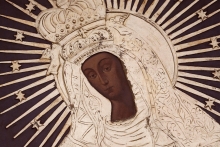
Teresa Kim Pecinovsky's Mother God and Christena Cleveland's God Is a Black Woman offer different portraits of a feminine God whose powerful love reshapes the world.

Since the pandemic upended life as we knew it over two years ago, I have found the apostle Paul’s letter to the church at Corinth particularly instructive. In 1 Corinthians 12, Paul provides one of the most poignant metaphors in all of scripture, comparing the health of the church to that of the human body — a comparison that also applies to the health of our broader communities, nation, and world.
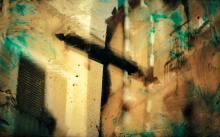
But while my ethical objections led me to atheism, my trauma led me back to Christ. Simply put: I had a relapse and sought out a faith community because I needed to be around people. Praying helped. Being around people helped. Devoting myself to something bigger than myself and to Christ on the cross was an incredible comfort while I searched for effective medical treatment.
